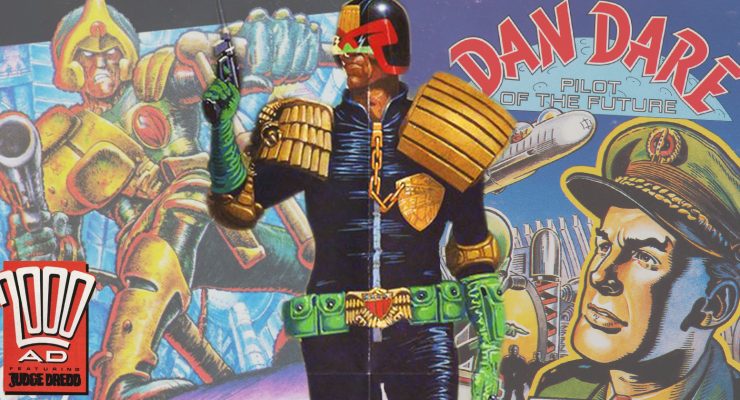Shaun Munro reviews After Us…

Piccolo Studio’s sophomore title – following their lovely 2019 debut Arise: A Simple Story – is an ode to nature whose experiential delights are unfortunately compromised by some seriously roughshod gameplay. How forgiving you are of slippery controls and less-than-stellar camerawork will likely define how much joy you’ll wring out of After Us.
Players take control of Gaia, the Spirit of Life, in a far-flung post-human world where the final animals have recently died. With the godly Mother depleting her own life force to preserve the souls of eight extinct animals, Gaia is tasked with tracking each of the eight souls down and returning them to Mother’s Ark, while fending off oil-covered Devourers, who wish to exterminate any life they come across.
With its environmentalist themes and focus on hunting down creatures many times larger than yourself, comparisons to both Death Standing and Shadow of the Colossus are inevitable. However, it’s not much of a spoiler to say that After Us doesn’t have a cheeky twist up its sleeve like the latter; truly, you’re on an earnest mission to free eight gigantic visages of beloved creatures, ranging from an ethereal sausage dog to an eagle, deer, shark, and even a pig.
Like Shadow of the Colossus, though, you’ll end up passing out after freeing each creature, at which point you’ll be briefly addressed by Mother back at the Ark. Indeed, much like Team Ico’s legendary adventure game, there’s a mostly wordless penchant for minimalism at play here.

Yet After Us doesn’t force players to approach their targets in any set order for the most part; you’re instead free to go after whichever creature you want. An ultra-handy in-game map tracks the branching routes to all of the eight spirits, and includes comprehensive fast travel options allowing you to quickly trek back and forth at will. Yet Metroidvania this is not, and you needn’t worry about turning up to any of your rescue sorties ill-equipped; there’s never an ability you’ll be lacking or waiting to unlock before you can proceed.
The game is first and foremost a platformer, focused on navigating Gaia through its diverse post-apocalyptic locales by running, jumping, gliding, dashing, and wall-running, and in turn avoiding the dangerous oil which covers large patches of the world, and whose tendrils will make short work of you if you get close enough.
By far the most interesting and promise-filled mechanic in After Us is the Burst of Life ability; players are able to release an explosive burst of light energy which briefly restores the surrounding locale to its previous lush, grassy state.
Though you’d be forgiven for assuming the mechanic would be utilised extensively for traversal – that is, turning arid, unclimable parts of the environment into more useful ones – that’s not really what happens at all. Beyond looking pretty, the Burst of Life is mostly limited to growing vegetation on vines which can then be ridden like rails, and also staggering enemies.

Yes, After Us features periodic combat, with the aforementioned Devourers chasing you down until they either grab you or you disintegrate them by firing energy projectiles. Ultimately these engagements are the worst part of the game if only because combat feels so blatantly tacked on and unnecessary, but the fights are at least infrequent and forgiving enough that they’re unlikely to bother most too much.
Dispatching a horde of foes can get tedious, but even if they grab you, you can break free by simply spamming the A button. Elsewhere many of the maps feature themed environmental threats, like acid rain which will kill you if you spend too long in it without shelter, sentient tridents making a bee-line for you, and giant circular saws tearing through the very ground you’re walking on.
Much like developer Piccolo’s far superior previous game, their new title is harangued by some seriously fiddly controls; I quickly lost count of the number of times I slipped off or missed a platform due to the imprecise feel of moving Gaia, which at times near-totally undermines the otherwise appealing fluidity of her traversal options. It’s also worth noting for whom it might concern that the game categorically doesn’t feature mouse and keyboard support in any way; you’re stuck with using a controller.
Beyond the unintuitive controls, some frustrating camera jank often makes platforming in confined spaces harder than it needs to be. Simply, by the time you reach the end of After Us, expect to have died a lot, and it’ll almost certainly never be to an actual on-screen enemy; the real enemy, rather, is the infuriatingly floaty controls. This is mitigated somewhat by regular checkpointing and a landing indicator, the latter of which you’ll likely make concerted use of.

There were also a few times where the visual signposting for where you need to go felt a little too slight for its own good, resulting in some lurches where I was stumped for just a bit too long. When you combine this with the game’s already relatively over-egged playtime of around 7-8 hours, by the time After Us was over I was happy to see it done, and left feeling it would’ve benefitted from being about half the length. Pro-tip to keep yourself heading towards the objective: pay attention to which way the ashen figures you’ll encounter throughout the world are facing, as they’ll usually lead you where you need to go.
Yet even at its lowest point, the diversity of the lands you’ll visit throughout are a treat, each of them tackling a particular facet of environmentalism – factory farming, oil, marine conservation, the automotive industry, and so on. Brought to vibrant life by a gorgeous art style, the apocalyptic sights of post-human abandon are as visually dazzling as they are genuinely haunting, while abetted by a moody, dynamic synth score. The overall world design doesn’t evoke the game’s themes in a remotely subtle way – the deer level will see you evading sniper rifle fire – but it’s clear that the developers are deeply passionate about their focal subject.
Steam Deck owners should beware that performance on the device isn’t great natively; even on lowest settings, you shouldn’t expect a consistent frame-rate above 25fps. Though in no way an indictment of the game itself, it’s worth bearing in mind for those hoping to play it portably.
All in all, After Us feels like a rough first draft of a neat idea; it’s packed with stellar visuals and rich atmosphere, yet the rickety gameplay makes it feel too often like hard work. As such, though you can extend your play-time by seeking out every last collectible memory of the world’s fallen creatures – an interesting idea that the game could’ve done much more with – most will likely have had their fill once they first roll credits.
After Us has style to spare and its heart in absolutely the right place, yet the maddeningly finicky controls make traversal feel like a chore – a cardinal sin for any platformer.

Pros:
+ Gorgeous art style.
+ Excellent musical score.
+ Passionate environmentalist messaging.
Cons:
– Controls are infuriatingly imprecise.
– Combat feels tacked-on.
– Frustratingly clunky camera.
– It’s too long.
Rating: 6/10
Reviewed on PC (also available for PS5 and Xbox Series X/S).
A review code was provided by the publisher.
Shaun Munro – Follow me on Twitter for more video game rambling, or e-mail me here.











